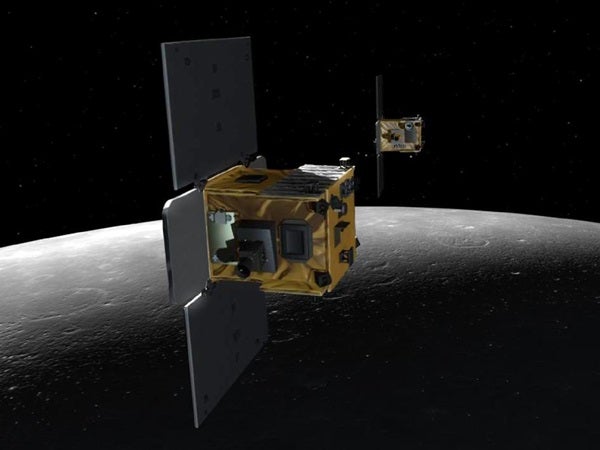The first video takes viewers on a guided tour of the GRAIL mission from launch to lunar orbit and data collection. Narrated by Massachusetts Institute of Technology planetary scientist Maria Zuber, who was GRAIL’s principal investigator, the animation follows the twin spacecraft from Earth to the Moon, tracking them as they reach their mapping orbit and begin taking data. Moving in tandem, the spacecraft react to changes in lunar gravity by speeding up or slowing down. By precisely measuring the velocity of the two probes relative to each other, scientists calculated how the gravitational pull varied.
The second video presents observations made with one of GRAIL’s lesser-known instruments: the Moon Knowledge Acquired by Middle School Students (MoonKAM for short) camera. The video, taken from the Ebb probe December 14, 2012, shows the Moon’s farside surface in the vicinity of the impact crater Jackson. At the time, Ebb was orbiting about 6 miles (10km) above the surface. The first clip comprises 931 individual frames while the second squeezes in 1,498 frames. The playback runs six times faster than the probe’s true orbital motion.










